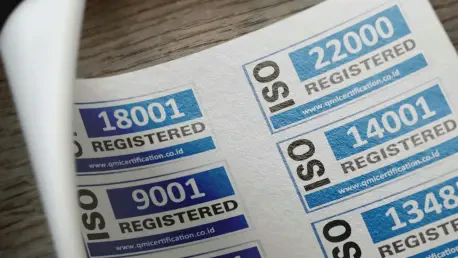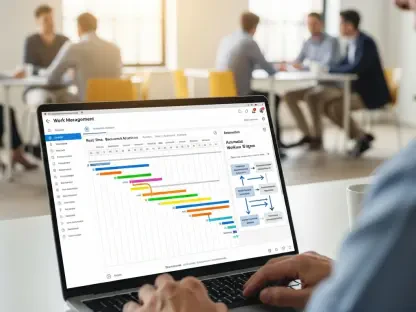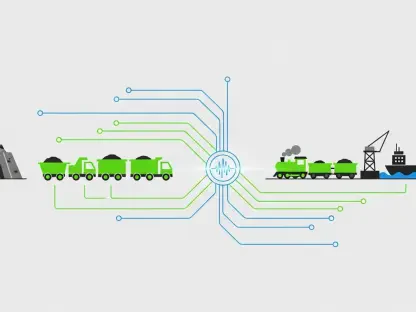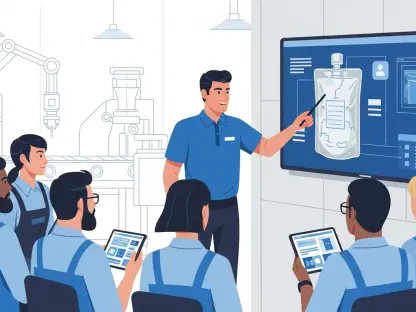In an era where regulatory compliance is non-negotiable for firms conducting audits, reviews, or compilations, the urgency to adopt the new risk-based quality management (QM) standards cannot be overstated. With a tight deadline looming, many firms find themselves racing against time to transition from traditional quality control practices to a robust QM system that meets the requirements of Statement on Quality Management Standards (SQMS) No. 1. The challenge lies not just in meeting compliance but in creating a sustainable framework that enhances service delivery and operational efficiency. Fortunately, existing practices can serve as a foundation for this transformation, making the process less intimidating than it may initially appear. By focusing on a structured approach, firms can navigate this shift effectively, turning a regulatory mandate into an opportunity for deeper business insights and improved client value. This article outlines a clear, actionable path to achieve that goal, ensuring readiness without unnecessary delays.
1. Gather Perspectives from Diverse Leaders and Teams
Building a quality management system starts with tapping into the collective wisdom within a firm. Engaging a wide range of stakeholders—senior executives, audit partners, engagement leaders, administrative staff, human resources, and IT teams—provides a comprehensive view of the organization’s needs and challenges. These discussions are crucial for clarifying the firm’s business strategy, identifying the specific types of audits performed, and understanding the unique QM requirements that apply. Moreover, they reveal how various teams and processes interconnect, shedding light on potential areas of risk or inefficiency that might otherwise go unnoticed. By fostering open dialogue across departments, firms can ensure that the QM system reflects the realities of day-to-day operations and aligns with overarching goals, setting a strong foundation for compliance and beyond.
The value of diverse input cannot be underestimated when designing a QM system tailored to a firm’s specific context. Conversations with different teams help uncover hidden bottlenecks or misalignments in current practices that could undermine quality objectives. For instance, administrative staff might highlight procedural inconsistencies, while IT teams could point out technology gaps affecting audit efficiency. These insights enable firms to prioritize areas needing immediate attention and build a system that not only meets standards but also enhances collaboration. Additionally, involving various levels of leadership ensures buy-in across the organization, making implementation smoother and more effective. This collaborative approach transforms the QM system from a mere compliance exercise into a strategic tool that drives better decision-making and long-term success.
2. Assign Key Roles and Duties
Once insights from various teams are gathered, the next step is to delegate responsibilities to ensure the QM system operates effectively. The standards outline four critical areas of leadership: overall accountability, day-to-day operational oversight, monitoring and remediation, and independence compliance. Typically, the managing partner or equivalent holds ultimate accountability for the system’s success. In larger firms, a separate audit partner might manage operational functions, working closely with the managing partner to maintain alignment. Additionally, two individuals with the necessary competence must oversee independence requirements and handle monitoring and remediation efforts. These roles may overlap with leadership positions or be assigned separately, depending on the firm’s structure. For sole practitioners, all responsibilities fall to a single individual, requiring careful time and resource management.
Assigning these roles is not just about meeting regulatory demands; it’s about creating a clear chain of command that supports the QM system’s functionality. Ensuring each role is filled by someone with the appropriate skills and authority is vital for maintaining quality across engagements. For instance, the person handling monitoring and remediation must have a deep understanding of audit processes to identify and address issues effectively. Similarly, independence compliance requires a keen eye for ethical standards to prevent conflicts of interest. By clearly defining these duties and communicating them across the firm, accountability is established, and potential gaps in oversight are minimized. This structured delegation helps firms maintain consistency in their QM efforts, ensuring that every aspect of the system is managed with precision and care, paving the way for sustainable compliance.
3. Define Quality Goals
A cornerstone of an effective QM system is the establishment of clear quality goals that focus on delivering consistent, high-quality services while improving organizational efficiency. These goals, often referred to as quality objectives, serve as benchmarks for performance and guide the firm’s efforts in meeting client expectations and regulatory standards. SQMS No. 1 provides a starting point by outlining predefined objectives across six of its eight components. These include holding leadership accountable for quality, ensuring adequate resources are allocated, promoting adherence to ethical standards among staff, encouraging sound professional judgment in engagement teams, and maintaining rigorous hiring and training practices. Using these as a foundation, firms can align their specific objectives with both compliance needs and strategic priorities.
Beyond simply adopting predefined objectives, firms must tailor these goals to reflect their unique operational context and client base. For example, a firm specializing in complex audits may prioritize objectives related to professional judgment and resource allocation to handle intricate engagements. Regularly reviewing these goals ensures they remain relevant as business needs evolve, preventing stagnation in quality efforts. Additionally, communicating these objectives clearly to all staff members fosters a shared understanding of expectations and drives collective accountability. By embedding these quality goals into daily practices, firms not only meet regulatory requirements but also build a culture of excellence that enhances client trust and operational resilience, setting themselves apart in a competitive landscape.
4. Create a Risk Evaluation Framework and Conduct a Preliminary Assessment
Developing a robust risk evaluation framework is essential to identify potential challenges that could derail quality objectives within a QM system. This process involves assessing each objective to pinpoint associated risks and designing targeted responses to mitigate them. Resources like the AICPA Practice Aid, which lists over 300 potential risks, can serve as a valuable tool to spark ideas and facilitate discussions. While not all listed risks will apply, they can be customized to match a firm’s specific circumstances, such as the nature of services provided or the industries served. The framework should be dynamic, allowing for adjustments as new risks emerge or existing ones evolve, ensuring that the QM system remains relevant and effective in addressing real-world challenges.
After establishing the risk evaluation framework, conducting a preliminary assessment is a critical next step to refine the focus on risks most pertinent to the firm’s operations. This initial test helps uncover unique vulnerabilities tied to specific audit types or service offerings, providing clarity on where to direct resources and attention. For instance, a firm might identify risks related to client onboarding or staff turnover that could impact engagement quality. Documenting these findings ensures a clear record of identified issues and planned responses, creating a roadmap for mitigation. This early assessment also serves as a learning opportunity, allowing firms to fine-tune their approach before full implementation, ultimately strengthening the QM system’s ability to prevent quality failures and support consistent performance across all engagements.
5. Rethink Your Gap Analysis Strategy
A thorough gap analysis is vital for uncovering weaknesses in a firm’s current processes and aligning them with QM standards, but it must go beyond a surface-level review. Instead of merely checking boxes, firms should dive deep into their business strategy to expose hidden inefficiencies or risks that might not be immediately apparent. Walking through key processes, such as handling a transaction or onboarding a new hire, with input from various departments can reveal critical insights. These exercises often highlight how interconnected daily tasks are to broader business decisions, helping staff recognize the importance of their roles in maintaining quality. This approach transforms gap analysis into a strategic tool for understanding and improving the firm’s operational health.
Addressing identified gaps requires a proactive mindset and a commitment to actionable solutions by the compliance deadline. Formal, documented responses should be developed for each gap, prioritizing immediate fixes where possible. If a long-term solution isn’t feasible right away, temporary measures can serve as stopgaps until larger projects, such as implementing new systems, are completed. For example, a gap in staff training might be temporarily addressed with targeted workshops while a comprehensive training platform is developed. Engaging cross-functional teams in brainstorming and implementing these solutions ensures diverse perspectives are considered, increasing the likelihood of effective outcomes. By treating gap analysis as an opportunity for growth rather than a burden, firms can strengthen their QM system and build resilience against future challenges.
6. Set Up Comprehensive Monitoring
Monitoring is a fundamental component of a QM system, ensuring that all aspects—from governance and leadership to human resources and technology—function as intended. This ongoing process involves tracking the effectiveness of responses to identified risks and quality objectives across the firm. Key performance indicators (KPIs), such as hours spent on continuing professional education or time allocated to audits, provide measurable data to assess progress and identify areas needing improvement. Regular monitoring helps detect issues early, preventing minor problems from escalating into significant quality failures. It also ensures that the QM system remains aligned with regulatory expectations, safeguarding the firm’s reputation and client trust through consistent performance.
Beyond tracking metrics, comprehensive monitoring requires a deeper analysis to uncover the root causes of any deficiencies or failures. Collecting and reviewing findings from monitoring efforts enables firms to understand why issues occur and design remediation strategies to prevent recurrence. This might involve revising processes, enhancing training, or updating technology to address underlying problems. Unlike the one-year post-implementation evaluation, monitoring is a continuous activity that adapts to changing circumstances and business needs. By embedding a culture of vigilance and accountability, firms can ensure their QM system evolves in real time, maintaining high standards of quality and operational efficiency even as external or internal dynamics shift.
7. Foster Ongoing Enhancement
A successful QM system is not static; it thrives on flexibility and a commitment to continuous improvement. As gaps, failures, or changes in business strategy emerge, firms must encourage staff at all levels to identify solutions and propose workflow enhancements. Treating the risk assessment as an evolving process ensures that the QM system adapts to new challenges, such as shifts in client demands or regulatory updates. This iterative approach prevents complacency and keeps quality at the forefront of operations. By regularly revisiting and refining processes, firms can turn potential setbacks into opportunities for growth, ensuring that their QM system remains a dynamic tool for achieving excellence.
Encouraging a mindset of ongoing enhancement also fosters innovation within the firm. Staff should be empowered to suggest improvements based on their day-to-day experiences, whether it’s streamlining a reporting process or adopting new technology to boost efficiency. Leadership plays a key role in supporting this culture by providing resources and recognition for proactive problem-solving. Additionally, periodic reviews of the QM system’s effectiveness can highlight areas where adjustments are needed, ensuring alignment with both current objectives and long-term goals. This dedication to constant refinement not only strengthens compliance with standards but also positions the firm as a leader in delivering high-quality services, ready to tackle future challenges with agility.
8. Update and Strengthen Current Documentation
Compliance with SQMS demands meticulous attention to reporting and documentation, ensuring every component of the QM system is clearly recorded. This includes documenting evidence that supports quality objectives, identified risks, and corresponding responses. Such records are essential for promoting transparency and accountability within the firm, providing a clear trail of decisions and actions taken to maintain quality. Proper documentation also serves as a reference for future improvements, helping to identify patterns or recurring issues that may require further attention. By prioritizing this step, firms can demonstrate their commitment to regulatory standards and build a robust foundation for audits or reviews.
Beyond meeting compliance requirements, updating and strengthening documentation offers strategic benefits for internal operations. Detailed records enable firms to analyze the effectiveness of their QM system over time, pinpointing areas where processes can be optimized. For instance, documented responses to past risks can inform better decision-making in similar future scenarios. Additionally, maintaining up-to-date documentation ensures that all staff have access to consistent information, reducing the risk of miscommunication or errors during engagements. This practice not only enhances operational efficiency but also reinforces a culture of precision and reliability, ensuring the QM system remains a valuable asset in achieving long-term success.
Unlocking Deeper Insights Through Quality Management
Reflecting on the journey of implementing a quality management system, it becomes evident that the process goes far beyond mere compliance with standards. Firms that embrace these steps discover actionable insights into resource allocation, client value assessment, and onboarding efficiencies. The structured framework provides clarity on operational strengths and weaknesses, enabling better strategic decisions. Looking ahead, the focus should shift to leveraging these insights for broader applications, such as extending QM principles to tax or advisory services for enhanced outcomes. Exploring technology solutions to automate monitoring or documentation tasks could further streamline efforts. As firms move forward, maintaining a proactive stance on continuous improvement will ensure that quality remains a competitive edge, driving sustainable growth and client satisfaction in an ever-evolving landscape.









